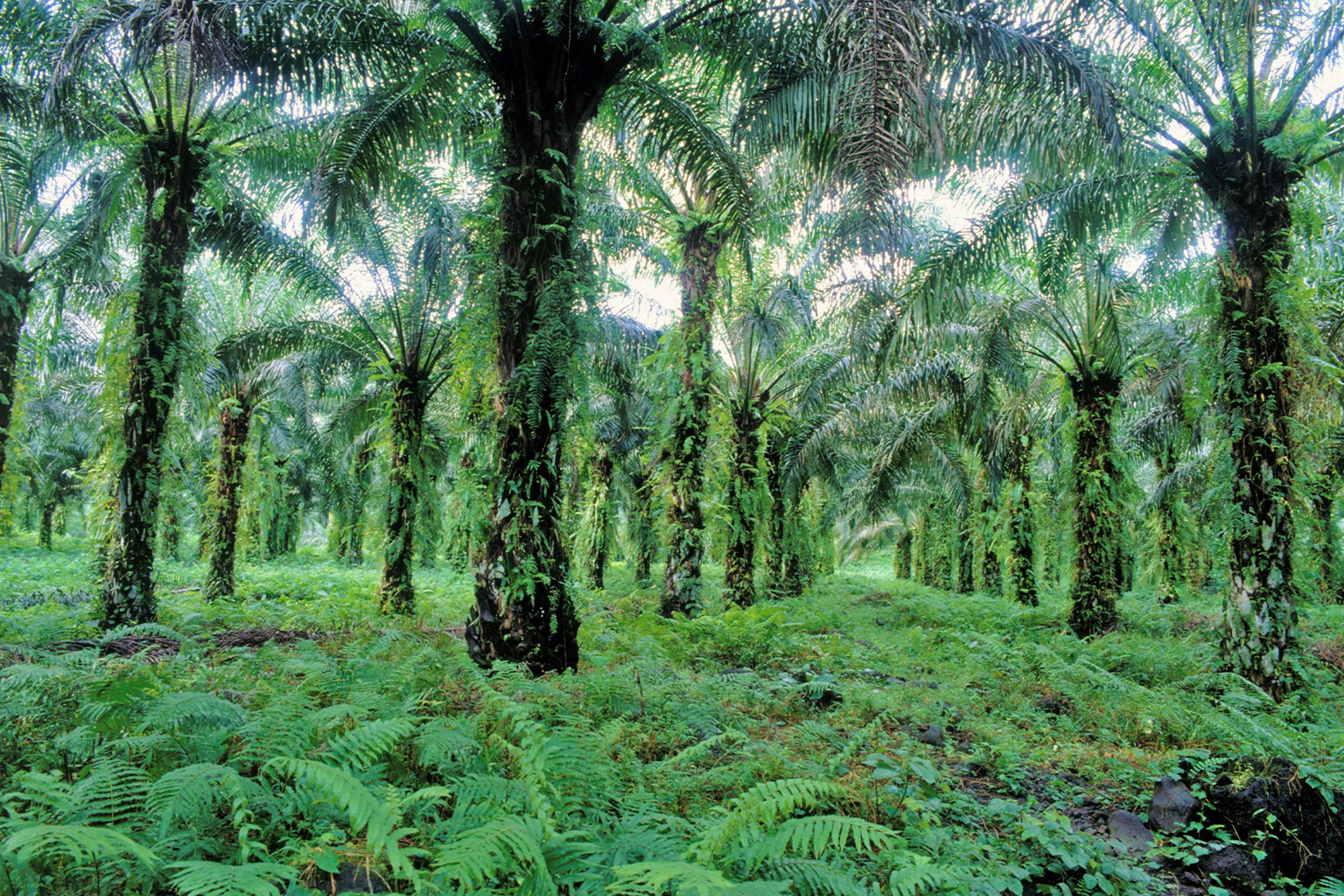- Using novel machine-learning techniques, researchers found that of the 1,889 species of palms with enough data to investigate, more than half (56%) may be threatened with extinction.
- Researchers hope that the use of artificial intelligence and machine learning, paired with data from the IUCN Red List of Threatened Species, can speed up preliminary evaluations of a species’ conservation status, reduce costs, and avoid bias toward vertebrate animals.
- The study found that nearly half of the functionally distinct species were threatened, as well as nearly one-third of species used by humans (at least 185 palm species). The study also identified high-priority regions for palm conservation including Borneo, Hawai‘i, Jamaica, Madagascar, New Caledonia, New Guinea, the Philippines, Sulawesi, Vanuatu, and Vietnam.
- Like many other threatened plant and animal species, the greatest risk to palms is habitat destruction from agricultural and urban expansion.
Palm trees are iconic figures in tropical landscapes, providing food, tools, medicine and materials for homes to millions globally and playing key roles in many ecosystems. Now, researchers have determined that more than half of global palm species could be at risk of extinction.
Using novel machine-learning techniques and data from the IUCN Red List of Threatened Species, researchers from the Royal Botanic Gardens, Kew, the University of Zurich, and the University of Amsterdam investigated the extinction risk of nearly two-thirds of the palm family.
Of the 1,889 species of palms with enough data for analysis, more than half (56%) may be threatened with extinction, the researchers found. When these findings are extrapolated to all known palm species, more than 1,000 species could be threatened, researchers say. These findings have been published in the journal Nature Ecology & Evolution.

“Palms are the most iconic plant group in the tropics and one of the most useful too. After this study, we have a much better idea of how many, and which, palm species are under threat,” Rodrigo Cámara-Leret, a senior researcher at the University of Zurich and co-author of the study, said in a press release.
The IUCN Red List is regarded as the authority on the conservation status of animal, plant and fungal species. However, making determinations about whether a species is threatened with extinction often requires massive amounts of data and work by researchers, so scientists decided to employ artificial intelligence and machine learning to sift through the data and fill in some of the gaps. Researchers hope that AI can speed up preliminary evaluations of a species’ conservation status, reduce costs, and avoid bias toward vertebrate animals.
“This is a great application for machine learning — to address the extinction crisis facing palms,” M. Patrick Griffith, a palm expert and executive director of the Montgomery Botanical Center in Coral Gables, Florida, who was not involved in the research, told Mongabay by email. “Writing a formal conservation assessment for a palm species can be a slow, painstaking process. This paper provides a way to rapidly assess huge numbers of poorly-known palm species, and offers ways to help conserve those palms.”

Palms are found in 227 regions (countries and/or individual islands) globally and have a wide breadth of genetic diversity. Priority conservation may be given to threatened species that are more genetically different, or evolutionarily distinct, from their relatives; have unusual features that make them functionally distinct; or are known to be used by humans.
The study found that nearly half of the functionally distinct species were threatened, as well as nearly one-third of species used by humans (at least 185 palm species). Like many other threatened plant and animal species, the greatest risk to palms is habitat destruction from agricultural and urban expansion.
“This is a bit less than extrapolations based on the Red List assessment only, but is still very concerning given the many interactions between palms and other living beings,” Sidonie Bellot, research leader in character evolution at Kew, said in a press release. “These interactions range from the fungi and insects living on them, to the mammals and birds eating their fruits, to the many people relying on palm products.”
The study also identified high-priority regions for palm conservation, where more than 40% of the regionally distinct or highly utilized palms face risk of extinction. These areas include Borneo, Hawai‘i, Jamaica, Madagascar, New Caledonia, New Guinea, the Philippines, Sulawesi, Vanuatu, and Vietnam.
“Caribbean islands hold many threatened palm species, and this study identified priorities for palm conservation and research in Cuba and Jamaica, and offered some alternative species for human livelihoods in Trinidad and Tobago,” Griffith said. “These findings, along with vital local expertise in those countries, can help protect these important, compelling, and irreplaceable tropical palms.”

Liz Kimbrough is a staff writer for Mongabay. Find her on Twitter: @lizkimbrough_
Banner image: A palm tree stands tall in a forest in Costa Rica. Image by BelaMarie via Pixabay (Public domain).
Citation:
Bellot, S., Lu, Y., Antonelli, A., Baker, W. J., Dransfield, J., Forest, F., … Bachman, S. P. (2022). The likely extinction of hundreds of palm species threatens their contributions to people and ecosystems. Nature Ecology & Evolution, 6, 1710-1722. doi:10.1038/s41559-022-01858-0
FEEDBACK: Use this form to send a message to the author of this post. If you want to post a public comment, you can do that at the bottom of the page.
